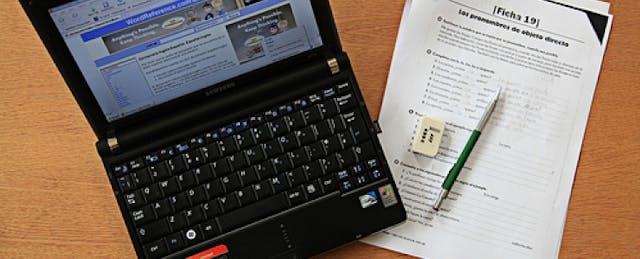Six years since the publication of Disrupting Class and Rocketship’s first learning labs, the body of knowledge for individual teachers around blended learning is still quite limited. While the internet is exploding with loads of resources and lesson plans around Common Core, when it comes to blended learning - creating personalized learning plans or assessing for mastery - getting step by step instructions are hard to come by.
This is where BetterLesson hopes to step in. In the spirit of its Master Teacher project, which enabled the company to profile 137 Master Teachers and share their entire year’s worth of Common Core lesson plans, BetterLesson is turning its sights on blended learning.
“We hope to capture authentic blended learning practice, in all it’s glory,” says BetterLesson CEO Alex Grodd. “We want to show experimentation, we want to show teachers trying to figure out what works and what doesn’t. Ultimately, we want to demystify it and make it accessible to all.”
With $780K from The Learning Accelerator, BetterLesson will recruit ten of the country’s top blended learning teachers to share what works in their classrooms. These teachers will come together regularly for virtual meetings and twice annually to collaborate, discuss their practice, and figure out the best way share what they do so it’s easy for their peers to understand.
“We don’t just want to profile teachers from schools like Rocketship and Summit. We want teachers that are in contexts that might not be perfect,” explains Beth Rabbitt, Partner at The Learning Accelerator. For this reason, Grodd explains they are “leaving no stone unturned” in their search for these teachers and their work.
The search begins this week and will end in by mid-summer 2014. Each Master Teacher will receive $15K for the year, with the expectation that they join regional meetings, engage in coaching cycles, and ultimately share their practice through BetterLesson’s website starting in autumn 2014.
But sharing practice won’t be as simple as sharing lesson plans. For example, in a traditional lesson, it’s easy to share step-by-step instructions for activities and assessments when all the students are doing the same thing.
However, as Rabbitt explains, “the difference in a blended learning environment is that not every student is on the same page, and a lot of different things are happening at different times.”
When each student has their own learning plans; on any given day they could be working through different content, taking different assessments, and brought together in constantly changing groupings. Therefore, sharing their work won’t be as easy as sharing a simple lesson plan. And according to Grodd, BetterLesson is thinking more broadly than lesson plans:
“We want to show how these teachers think about using tools, why they use them, what they use, when they use them and what their thought process is, how they are solving problems, and how instruction evolves over the course of the year.”
This work is a part of a broader effort by The Learning Accelerator to support blended learning efforts, through the development of human capital. In addition to funding BetterLesson to develop ready-to-use blended learning resources for teachers, The Learning Accelerator also plans to fund three other organizations for a grand total of $2 million in investments.
The other lucky organizations include Relay Graduate School of Education, who will contribute a suite of blended learning training and teacher preparation modules. TNTP (formerly known as The New Teacher Project) will develop recommendations and advice for districts in managing a human capital strategies as they go blended. And the Highlander Institute will create a technical and training assistance network.


